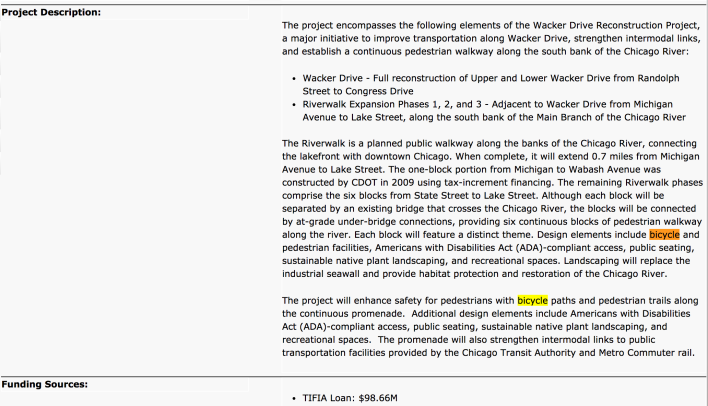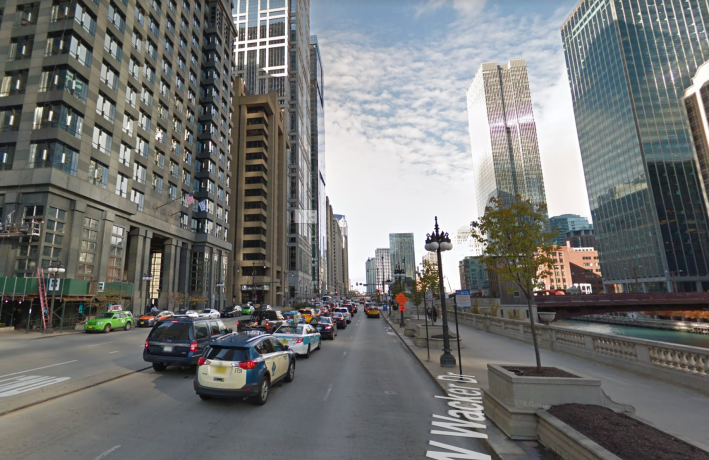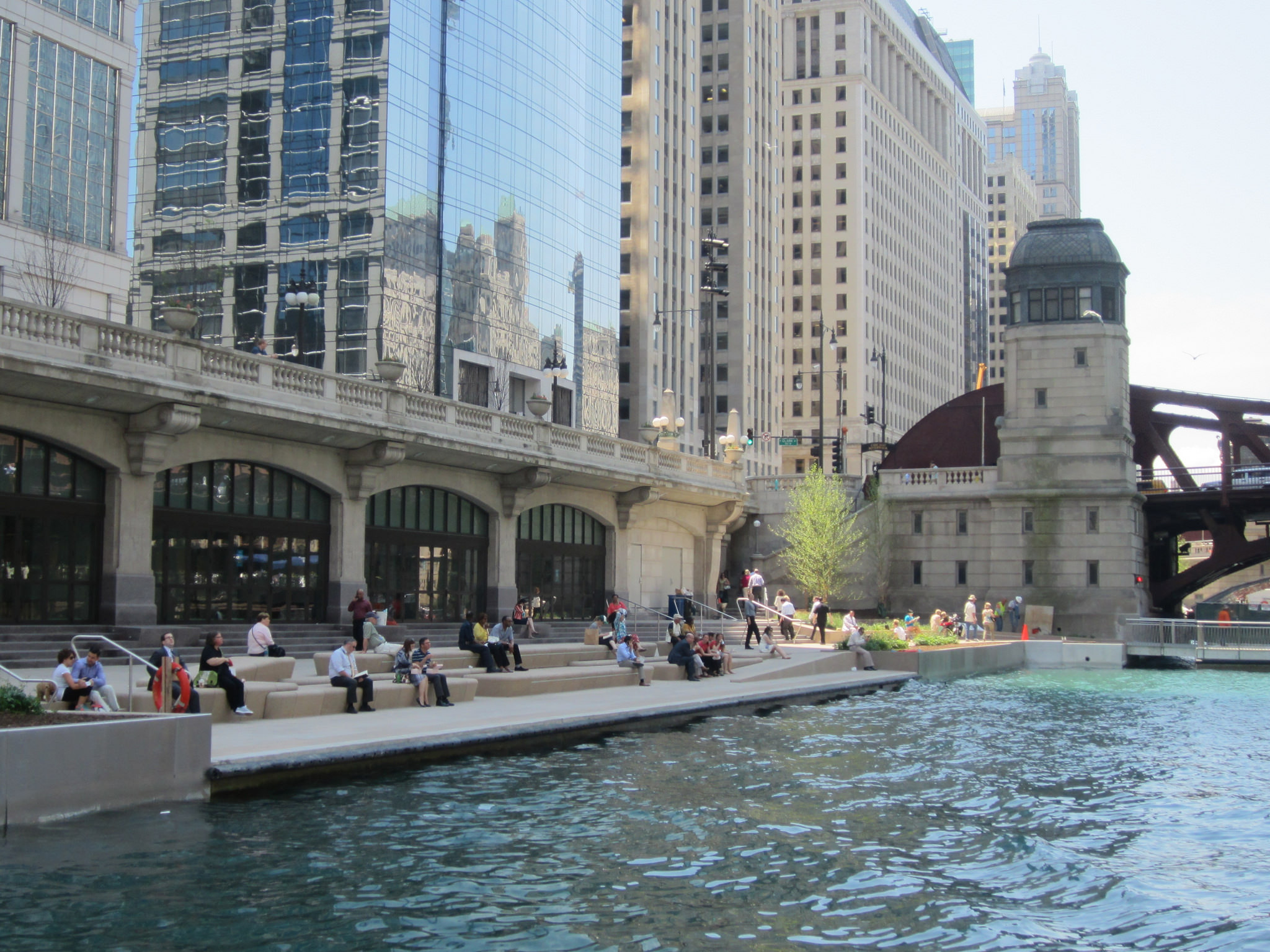Earlier this month Streetsblog Chicago pointed out that the "Walk Your Bike" signs that were recently installed on the new sections of the Chicago Riverwalk are bogus. Of course bicyclists need to use common sense and ride at walking speed or dismount when the path is crowded. But it's perfectly legal to cycle on the promenade, which was pitched to the federal government as a bike facility and appears as an off-street trail on the city's bike map. However, a security guard I encountered last week while slowly cycling there during a not-particularly-busy time was unaware of that fact. She called out "No biking on the riverwalk" as I rode past.

Now downtown alderman Brendan Reilly wants to make the perception that it's illegal to bike on the riverwalk a reality. As reported by Block Club Chicago, today Reilly proposed an ordinance that would ban biking on the riverwalk altogether.
Reilly is something of a Jekyll-and-Hyde figure when it comes to bicycling. On the one hand, he's generally been supportive of installing protected bike lanes in the Loop. On the other hand, he's done misguided things like blocking the installation of Divvy stations on the Magnificent Mile, helping to get pedicabs banned from downtown streets, and closing an entrance to the Lakefront Trail at night.
“We’re not looking to penalize bicyclists… I’m a big fan of keeping Chicago bicycle-friendly," Reilly said, according to Block Club. “This is to make sure people understand this is a code violation." Once more, it is not currently against the law to bike on the riverwalk, but Reilly argues that the ordinance would empower the security guards to notify cyclists that it's illegal to ride there there. And, again, they guards are already doing, erroneously.
Thankfully the Active Transportation Alliance is around to serve as a voice of reason to counter the alderman's illogical proposal. "[We] agree with Alderman Reilly that bikes should be walked when the Riverwalk is crowded," said executive director Ron Burke in a statement. "However, we don’t support a complete ban on biking because there are many hours and times of the year when it’s safe for people biking and walking to share the path."
Burke noted that the riverwalk was originally conceived as a biking and walking facility. "It’s important that biking remain an option because the majority of people aren’t comfortable riding on city streets, and the riverwalk is a popular connection between the lakefront and downtown jobs, retail and entertainment."

Burke added that the group is eager to work with Reilly and other city leaders to brainstorm ideas to improve safety and ease congestion on the riverwalk. When the new signs first came up, bike advocate Michelle Stenzel proposed converting a lane or two of six lane Upper Wacker Drive, which sits right above the riverwalk, to protected bike lanes, which could easily be done without causing undue traffic congestion. Burke seconded this idea.
Indeed, while Reilly's proposal to ban bikes on a bikeway makes no sense, the Wacker protected bike lane idea is a very sensible one.
![]()
Did you appreciate this post? Consider making a donation through our PublicGood site.






